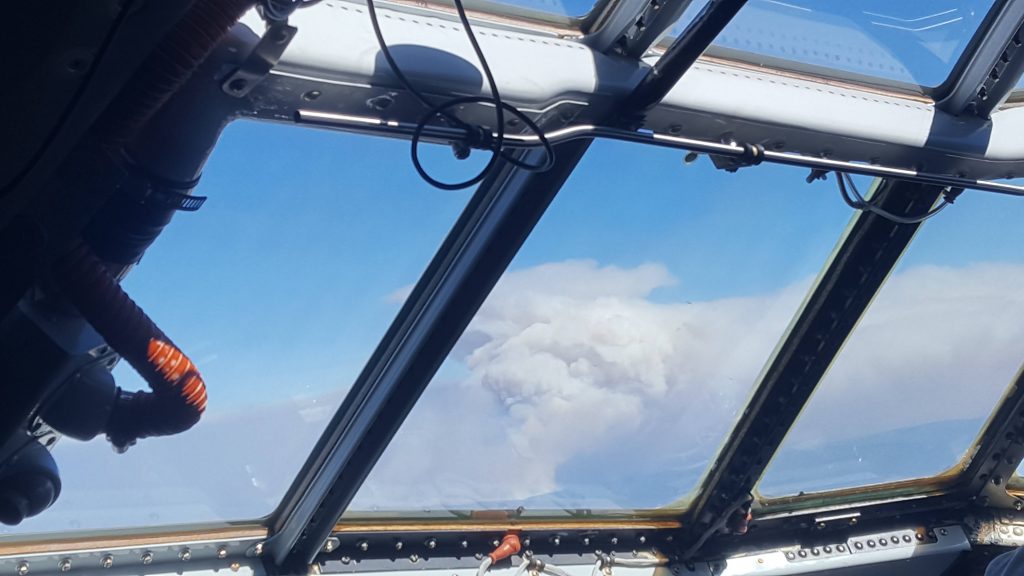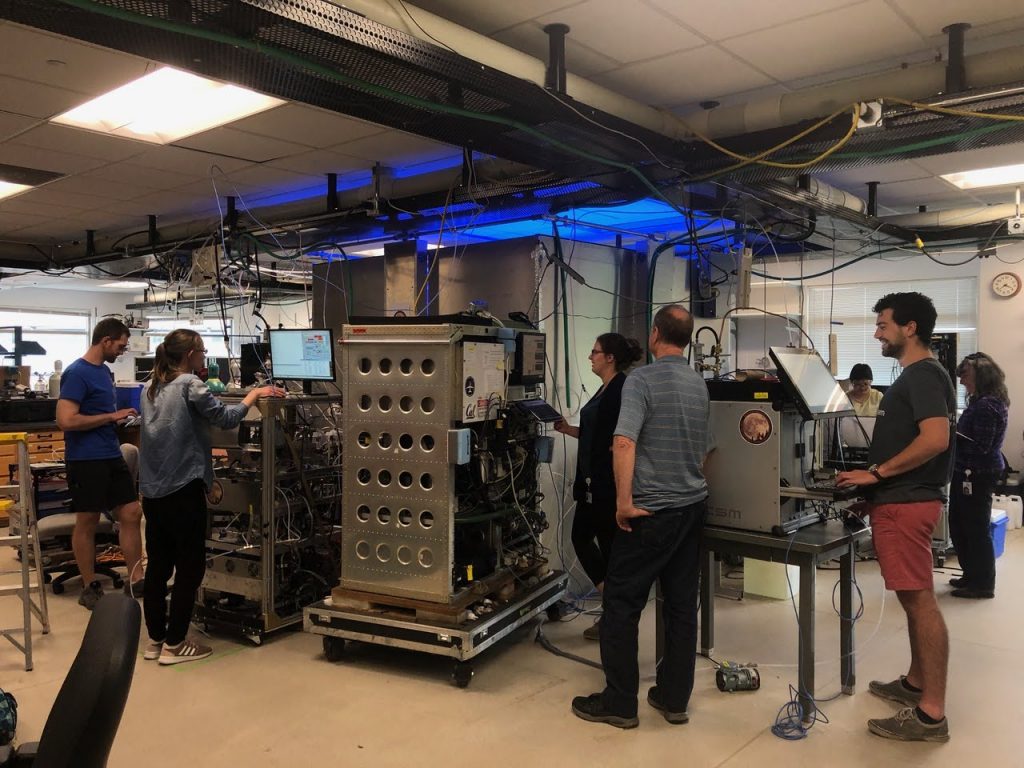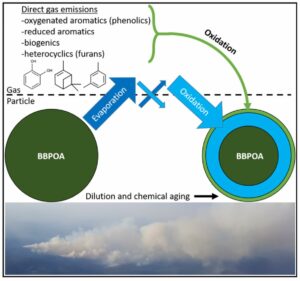Wildfires emit particles and reactive trace gases which significantly impact tropospheric and stratospheric chemistry, air quality, climate, and human health on regional and global scales. The particles can be 2.5 microns or smaller in diameter (PM2.5), which are small enough to enter our lungs, and can either absorb or scatter sunlight depending on its composition. Some important reactive gases that wildfires emit are hydrocarbons and nitrogen oxides (NOx = NO + NO2), as they are important precursors of air pollutants ozone (O3) and particulate matter (PM). In a warmer and drier climate, wildfires are predicted to be more frequent and more intense, and thus will continue to grow in importance in the future.

The Thornton group studies wildfires through (1) in situ (on site) and remote observations, (2) laboratory experiments, and (3) modeling. The most recent projects supporting wildfire research were the WE-CAN and FIREX-AQ field campaigns, the MOONLIGHT laboratory experiment, and the Australian wildfire season of 2019–2020. During WE-CAN and FIREX-AQ, the high-resolution time-of-flight chemical ionization mass spectrometer (HR-ToF-CIMS) flew through wildfire smoke to detect oxygenated gases. During MOONLIGHT, with an inlet that switches between gas-phase and particle-phase sampling, the HR-ToF-CIMS characterized the products of aromatic chemistry within a laboratory chamber. Finally, a study of the Australian wildfire season of 2019–2020 related satellite measurements of reactive nitrogen-containing gases to satellite-derived fire radiative power.

In the Thornton group, our research has been focused on describing fire plume evolution in the particle phase and the gas phase as well as characterizing the importance of nitrous acid (HONO) as an emission and for chemical evolution in the plume.
